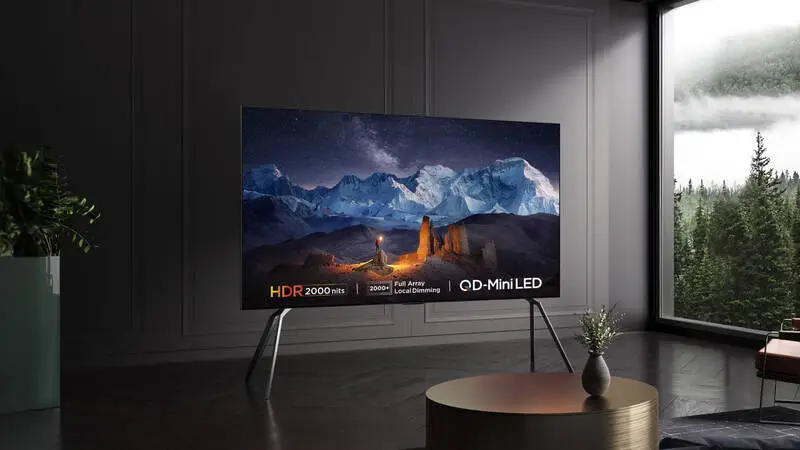Ever wondered if you truly need an aerial for your smart TV? As technology evolves and streaming services become more prevalent, understanding the role of aerials in your television setup is essential. In the UK, approximately 67% of households own smart TVs, yet about 40% still rely on aerials for Freeview access. With nearly 50% of UK adults subscribing to streaming services, the balance between traditional broadcasting and modern streaming is crucial for viewers.
In this article, we’ll explore whether you need an aerial for a smart TV, delving into statistics and trends that shape viewer preferences. We’ll examine the benefits of both aerials and streaming options, helping you make an informed decision about your television setup. Whether you’re a streaming devotee or a live TV enthusiast, understanding the role of aerials can enhance your viewing experience.
Understanding Smart TVs
Smart TVs have revolutionized the way we consume television content. Unlike traditional TVs that rely solely on aerials for broadcasting, smart TVs connect to the internet and allow users to access a wide array of streaming services, including Netflix, Amazon Prime Video, and Disney+. With built-in applications and smart technology, these televisions provide viewers with more choices than ever before.
The growth of smart TVs in the UK is a testament to the changing landscape of television consumption. As of 2023, approximately 67% of households in the UK own at least one smart TV. This shift towards internet-connected devices has transformed how we watch television, allowing viewers to binge-watch entire series, access on-demand content, and enjoy a variety of entertainment options at their fingertips.
The Role of Aerials
Despite the rise of smart TVs, the question remains: Do you need an aerial for a smart TV? The answer largely depends on your viewing habits and preferences. Aerials are essential for receiving over-the-air broadcasts, allowing viewers to access free-to-air channels. In the UK, Freeview is the most widely used service, providing access to numerous channels without any subscription fees.
According to statistics, about 40% of UK households continue to use aerials to receive Freeview signals. This reliance on traditional aerials indicates that many viewers still appreciate the availability of live television, particularly for local news, sports, and entertainment. Aerials can provide a reliable source of broadcast content, making them a valuable addition for viewers who want to maintain access to live programming.
The Benefits of Streaming
While aerials serve a crucial purpose for many, streaming services have gained immense popularity and transformed how people watch television. Nearly 50% of UK adults subscribe to at least one streaming service, with Netflix, Amazon Prime Video, and Disney+ leading the pack. These platforms offer a vast library of movies, TV shows, documentaries, and original content that can be accessed at any time.
Streaming services provide flexibility that traditional television cannot match. Viewers can watch what they want, when they want, and even download content for offline viewing. This convenience has led to a significant shift in viewing habits, with many people opting for streaming over live television.
Despite the advantages of streaming, it’s essential to recognize that a stable internet connection is crucial for a seamless viewing experience. With 93% of UK households having internet access and an average broadband speed of 78.3 Mbps, many viewers can enjoy high-definition streaming without issues. However, this reliance on the internet raises questions about the quality of service and potential disruptions.
Combining Streaming and Aerials
For those who appreciate both live television and streaming services, combining the two options may be the best solution. By having an aerial for your smart TV, you can enjoy local broadcasts while also accessing streaming content. This hybrid approach allows you to take advantage of the benefits offered by both aerials and streaming services.
Having an aerial ensures that you can watch live sports events, breaking news, and popular shows as they air. For example, many viewers prefer to watch live sports on broadcast television, as the experience is often enhanced by the excitement of live commentary and real-time action. In contrast, streaming services may not always offer live broadcasts of certain events, making an aerial a valuable addition for sports enthusiasts.
Moreover, many smart TVs come equipped with built-in tuners that allow you to receive over-the-air signals. This means that if you have an aerial connection, you can easily switch between streaming apps and live channels without needing additional devices. This seamless integration enhances the user experience and provides flexibility in how you consume content.
Cost Considerations
When evaluating whether you need an aerial for your smart TV, cost is an essential factor to consider. Streaming services often come with subscription fees, which can add up over time. By utilizing an aerial, you can reduce your reliance on paid subscriptions and access free content. This can lead to significant savings, particularly for families or individuals who watch a lot of television.
In contrast, investing in a good-quality aerial may require an initial expense. However, this cost can be offset by the savings gained from avoiding subscription fees for various streaming services. Depending on your viewing habits, having an aerial may ultimately prove to be a more cost-effective option in the long run.
Quality of Viewing Experience
Quality is another critical aspect when deciding if you need an aerial for your smart TV. Over-the-air broadcasts can often provide superior picture and sound quality compared to streaming, especially if you have a robust aerial setup. Many viewers appreciate the clarity and reliability of broadcast signals, particularly for high-definition content.
This quality becomes especially relevant during live events, such as sports or award shows, where the excitement of the moment is best captured through high-quality broadcasts. While streaming services have improved significantly in delivering quality content, viewers may still experience buffering or quality drops during peak usage times or poor internet conditions. An aerial provides a stable and reliable alternative for those who prioritize viewing quality.
The Future of Aerials and Smart TVs
As technology continues to evolve, the role of aerials in the television landscape may change. While smart TVs and streaming services dominate the market, traditional aerials will likely continue to play a significant role for many viewers. The combination of both options allows for a more comprehensive viewing experience that caters to different preferences and needs.
Moreover, as new technologies emerge, such as 5G networks and improved broadband speeds, the way we consume content may further evolve. These advancements may lead to more viewers relying solely on streaming services, reducing the need for aerials. However, for those who appreciate the reliability and quality of live broadcasts, aerials will likely remain a staple in their television setups.
Conclusion
In conclusion, whether you need an aerial for a smart TV depends on your viewing habits and preferences. If you enjoy watching live television, particularly free-to-air channels, then an aerial is essential. On the other hand, if you primarily rely on streaming services and have a reliable internet connection, you can enjoy a variety of content without needing an aerial.
Ultimately, the choice comes down to how you want to consume your television content. For those who appreciate the convenience and flexibility of smart TVs but still want to enjoy live programming, the combination of both streaming services and an aerial may be the perfect solution. On the flip side, if you’re content with streaming and have a dependable internet connection, you can forego the aerial entirely. Understanding your preferences and needs is crucial in determining whether you need an aerial for a smart TV.

